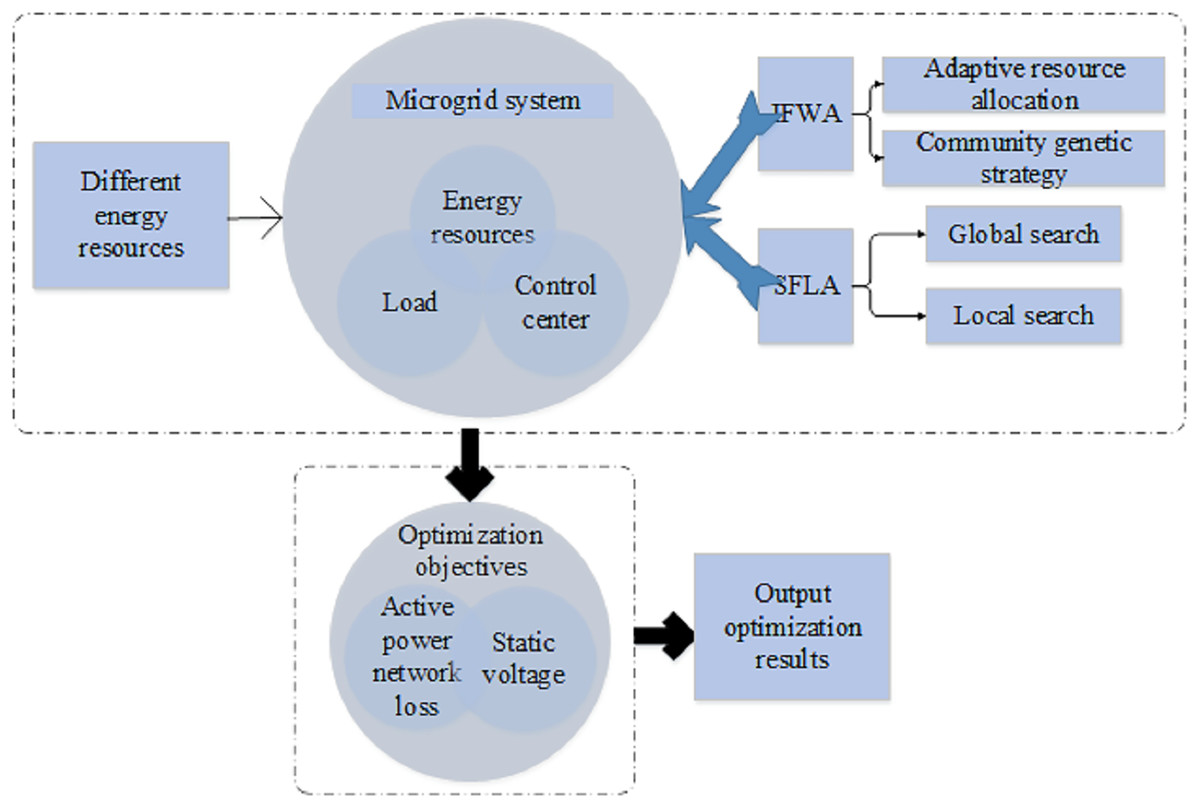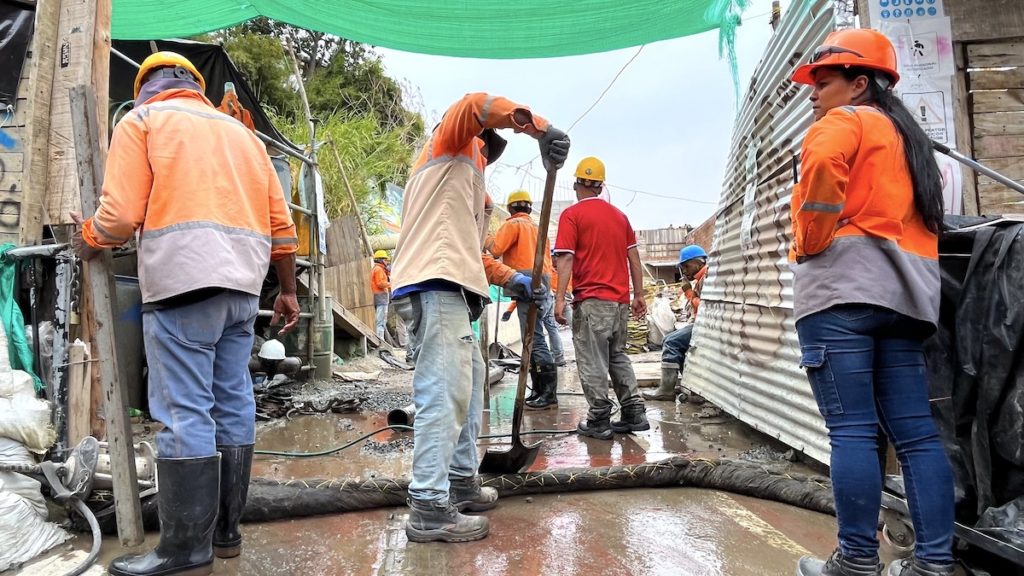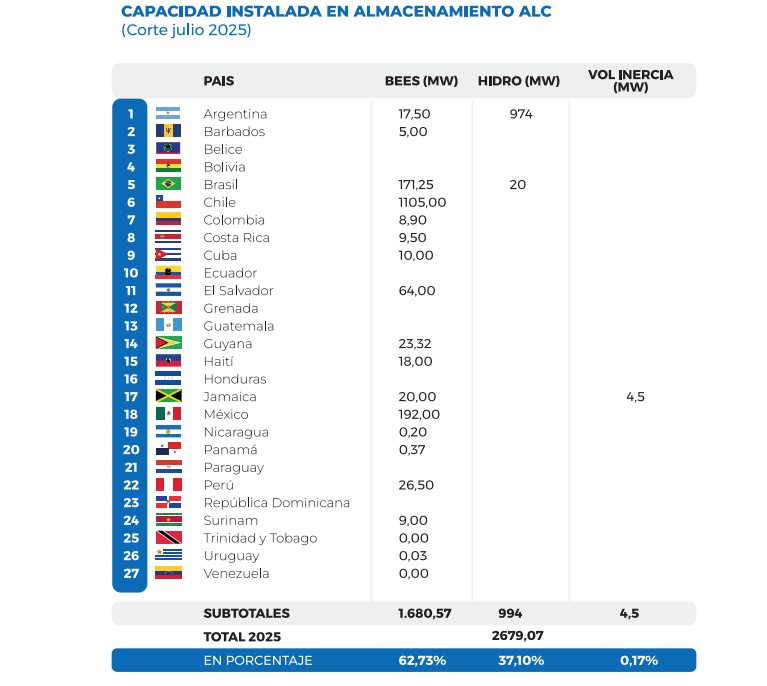Multi-objective optimization of hybrid microgrid for energy trilemma goals using slime mould algorithm – Nature

Report on the Multi-Objective Optimization of a Hybrid Microgrid for Achieving Sustainable Development Goals
Executive Summary
This report details a study on the multi-objective optimization of a hybrid microgrid (HMG) using the Slime Mould Algorithm (SMA). The primary objective was to address the energy trilemma—security, affordability, and sustainability—in direct alignment with the United Nations Sustainable Development Goals (SDGs), particularly SDG 7 (Affordable and Clean Energy), SDG 9 (Industry, Innovation, and Infrastructure), SDG 11 (Sustainable Cities and Communities), and SDG 13 (Climate Action). The HMG model integrates renewable energy sources (solar, wind), diesel generators, and electric vehicle (EV) batteries with bidirectional vehicle-to-grid (V2G) capabilities. The SMA demonstrated superior performance over conventional algorithms, achieving a 12.3% reduction in power loss and a 9.8% improvement in the Levelized Cost of Energy (LCOE). System reliability was significantly enhanced, with the Loss of Power Supply Probability (LPSP) reduced to 0.012. These results confirm that the SMA-based framework offers a robust and efficient solution for developing resilient, affordable, and low-carbon energy systems, thereby advancing the global sustainability agenda.
1.0 Introduction: Aligning Energy Systems with Sustainable Development Goals
1.1 The Energy Trilemma and SDG 7
The global energy sector faces the challenge of balancing energy security, affordability, and environmental sustainability, a framework known as the Energy Trilemma. This challenge is at the core of SDG 7, which aims to ensure universal access to affordable, reliable, sustainable, and modern energy. In nations like India, achieving SDG 7 requires a strategic transition from fossil fuel dependency to renewable energy systems. This transition involves complex trade-offs between deploying diverse distributed energy resources (DERs), ensuring system reliability, and minimizing greenhouse gas emissions, all while managing the significant capital investment required. This study addresses these trade-offs by proposing an optimization framework for hybrid microgrids that directly targets the objectives of SDG 7.
1.2 Limitations of Conventional Approaches in Achieving SDG Targets
Traditional energy management strategies often fall short of holistically addressing the interconnected goals of the SDGs.
- Rule-based Energy Management Systems (EMS): These systems lack the adaptability required to manage the dynamic and intermittent nature of renewable energy sources, leading to suboptimal performance and hindering progress towards reliable clean energy (SDG 7).
- Mixed-Integer Linear Programming (MILP): While mathematically rigorous, MILP becomes computationally intensive for large-scale, non-linear systems, making it impractical for optimizing complex microgrids with conflicting objectives such as cost, emissions, and reliability.
- Conventional Metaheuristic Algorithms (PSO, GA): Particle Swarm Optimization (PSO) is prone to premature convergence, while Genetic Algorithms (GA) suffer from slow convergence and high computational demands. These limitations impede the development of efficient and scalable solutions needed for resilient energy infrastructure (SDG 9).
1.3 The Slime Mould Algorithm as an Innovative Solution for SDG Advancement
To overcome these limitations, this study employs the Slime Mould Algorithm (SMA), a novel bio-inspired metaheuristic. SMA’s ability to dynamically balance exploration and exploitation makes it highly effective for solving complex, multi-objective optimization problems. By efficiently navigating the trade-offs between technical, economic, and environmental objectives, SMA provides an innovative tool to advance several SDGs:
- SDG 7 (Affordable and Clean Energy): By minimizing the Levelized Cost of Energy (LCOE) and maximizing renewable energy penetration.
- SDG 9 (Industry, Innovation, and Infrastructure): By providing a robust optimization method for designing resilient and sustainable microgrid infrastructure.
- SDG 13 (Climate Action): By minimizing CO2 emissions through the optimal dispatch of low-carbon energy sources.
This research distinguishes itself by explicitly modeling EV batteries as bidirectional DERs, a critical innovation for future sustainable transportation and energy systems (SDG 11).
2.0 Framework for Sustainable Microgrid Optimization
2.1 Defining Performance Metrics for Sustainable Development Goals
To evaluate the microgrid’s performance against sustainability targets, this study formulates the optimization problem around key metrics that directly correspond to specific SDGs:
- Energy Security (SDG 7, SDG 9): Measured by:
- Loss of Power Supply Probability (LPSP): To quantify system reliability and ensure consistent energy access.
- Voltage Deviation Index (VDI) and Active Power Losses: To assess power quality and system efficiency, which are crucial for resilient infrastructure.
- Energy Affordability (SDG 7): Measured by:
- Levelized Cost of Energy (LCOE): To quantify the cost-effectiveness of the generated electricity, ensuring energy remains affordable.
- Environmental Sustainability (SDG 7, SDG 13): Measured by:
- CO2 Emissions: To assess the environmental impact and the system’s contribution to climate action.
2.2 System Modeling for Resilient Infrastructure (SDG 9)
The proposed Hybrid Battery-supported Microgrid (HBMG) was modeled using the IEEE 33-bus radial distribution system. This standard testbed represents a typical distribution network serving both residential and commercial loads, making it a suitable case for developing scalable and resilient energy infrastructure. The HBMG configuration integrates a diverse portfolio of DERs to enhance system reliability and sustainability:
- Solar Photovoltaics (PV)
– Wind Turbines (WT)
– Diesel Generator (DGen) for backup power
– Battery Energy Storage Systems (BESS)
– Electric Vehicle Batteries (EVBat) with V2G capability
This P/W/D/B/E (PV/Wind/Diesel/BESS/EV) configuration is designed to meet load demand reliably while promoting the use of clean energy, a cornerstone of SDG 9 and SDG 11.
3.0 Methodology for Multi-Objective Optimization
3.1 Energy Management Strategy for SDG 7
A rule-based energy management strategy was developed to prioritize the use of renewable resources and energy storage, thereby minimizing reliance on fossil fuels and supporting the objectives of SDG 7. The operational hierarchy is as follows:
- Renewable Generation First: Power from solar PV and wind turbines is used to meet the primary load demand.
- Charging Storage with Surplus Energy: Any excess renewable generation is used to charge the BESS, promoting responsible energy consumption (SDG 12).
- Utilizing EV Batteries: Once the BESS is fully charged, surplus energy is directed to charge EV batteries, leveraging them as a distributed energy storage resource.
- Dispatching Backup Power: If renewable and stored energy are insufficient to meet the load, the diesel generator is activated to ensure supply reliability.
- Grid Import as a Last Resort: In a worst-case scenario, power is imported from the main grid to cover any remaining deficit.
3.2 Modeling of Distributed Energy Resources (DERs)
Each DER was modeled to reflect its operational characteristics and contribution to a sustainable energy mix. The integration of solar, wind, and EV batteries is central to reducing the carbon footprint of the energy system. The diesel generator, while a source of emissions, is included to guarantee energy security, reflecting the practical trade-offs required in the transition to fully renewable systems. The explicit modeling of bidirectional V2G operations allows EVs to not only consume power but also inject it back into the grid, providing critical ancillary services and enhancing grid stability, which is a significant innovation for sustainable urban infrastructure (SDG 11).
4.0 Analysis of Optimization Results and SDG Impact
4.1 Technical Performance: Enhancing Energy Security and Infrastructure Resilience (SDG 7 & SDG 9)
The SMA-based optimization yielded significant improvements in the technical performance of the microgrid. Active power losses were reduced by 48%, enhancing the overall efficiency of the distribution network. The optimal placement of DERs stabilized the voltage profile across the system. Most importantly, the LPSP was minimized to 0.0223, indicating a highly reliable power supply. This enhancement in reliability and efficiency directly contributes to building resilient infrastructure (SDG 9) and ensuring reliable energy access (SDG 7).
4.2 Economic Performance: Advancing Affordable Energy (SDG 7)
The optimization successfully lowered the LCOE, making the energy supplied by the microgrid more affordable. The SMA framework achieved the following LCOE values:
- Solar PV: $0.1484/kWh
- Wind Turbine: $0.1938/kWh
- EV Batteries: $0.2581/kWh
- Diesel Generator: $0.2884/kWh
By achieving a lower LCOE compared to benchmark methods like HOMER ($0.1810/kWh) and PSO ($0.1725/kWh), the SMA proves to be a superior tool for designing economically viable energy systems, a key target of SDG 7.
4.3 Environmental Performance: Contribution to Climate Action (SDG 13)
The study analyzed the carbon emissions associated with each DER, providing critical insights for climate action strategies. The results were:
- Wind DG: 22.27 kgCO2/kWh (most sustainable)
- Solar DG: 114.76 kgCO2/kWh
- Diesel Generator: 249.53 kgCO2/kWh
- EV Battery DG: 875.40 kgCO2/kWh (reflecting emissions from battery production)
While the integration of renewables drastically reduces operational emissions, the high carbon footprint associated with EV battery manufacturing presents a significant challenge for SDG 13. This finding underscores the need for sustainable supply chains and recycling strategies in the transition to electric mobility and storage.
4.4 Comparative Analysis of Optimization Algorithms
The proposed SMA framework demonstrated superior performance across multiple dimensions when compared to other established methods:
- Reliability (LPSP): SMA achieved an LPSP of 0.0223, outperforming HOMER (0.0353), PSO (0.0297), and SSA (0.0255).
- Affordability (LCOE): SMA yielded the lowest LCOE at $0.1484/kWh, compared to SSA ($0.1632/kWh), PSO ($0.1725/kWh), and HOMER ($0.1810/kWh).
- Computational Efficiency: SMA converged in 97 iterations (8.2 min), significantly faster than PSO (130 iterations, 12.7 min) and SSA (112 iterations, 10.5 min).
This comprehensive superiority highlights SMA’s effectiveness in balancing the conflicting objectives of the energy trilemma to achieve better outcomes for the SDGs.
5.0 Conclusion: A Framework for Achieving the Sustainable Development Goals
5.1 Summary of Key Contributions to SDGs
This study successfully demonstrated that the Slime Mould Algorithm provides a highly effective framework for optimizing hybrid microgrids in alignment with the Sustainable Development Goals. The key contributions include:
- SDG 7 (Affordable and Clean Energy): Achieved a low LCOE ($0.1484/kWh for solar) and a minimal LPSP (0.0223), ensuring energy is affordable, reliable, and increasingly clean.
- SDG 9 (Industry, Innovation, and Infrastructure): Provided an innovative and computationally efficient algorithm (SMA) to design resilient and sustainable energy infrastructure.
- SDG 11 (Sustainable Cities and Communities): Showcased the potential of integrating EVs with V2G capability as a core component of sustainable urban energy systems.
- SDG 13 (Climate Action): Quantified the emission reductions from renewable integration and identified the critical challenge of embodied carbon in battery technologies.
5.2 Challenges and Recommendations for Future Work
Despite the promising results, several challenges must be addressed for real-world deployment. The simplified modeling of battery degradation and the use of location-specific data limit the generalizability of the findings. Future research should focus on:
- Advanced Modeling: Incorporate detailed models for battery aging and degradation to create more accurate lifecycle assessments.
- Hybrid AI Frameworks: Develop hybrid SMA-Machine Learning models where ML can provide predictive forecasting for load and renewable generation, enhancing the adaptability of the optimization.
- Hardware-in-the-Loop (HIL) Testing: Validate the control algorithms on physical hardware to bridge the gap between simulation and practical implementation.
- Scalability and Demand Response: Extend the framework to larger networks and include demand-side management strategies to further enhance system flexibility and sustainability.
By addressing these areas, the SMA-based optimization framework can be further developed into a scalable, intelligent, and robust solution for advancing the energy transition and achieving the Sustainable Development Goals globally.
SDGs, Targets, and Indicators Analysis
1. Which SDGs are addressed or connected to the issues highlighted in the article?
-
SDG 7: Affordable and Clean Energy
This is the most central SDG in the article. The introduction explicitly states that the study’s goals align with “the United Nations Sustainable Development Goal 7 (SDG 7)”. The entire paper focuses on creating a hybrid microgrid that ensures energy is secure, affordable, and sustainable through the integration of renewable sources like solar and wind, which is the core mission of SDG 7.
-
SDG 9: Industry, Innovation, and Infrastructure
The article discusses the development of resilient and sustainable infrastructure through the “optimal topology and placement strategy for a Hybrid Battery-supported Microgrid (HBMG) within a radial distribution network”. It emphasizes innovation by using advanced algorithms like the Slime Mould Algorithm (SMA) to upgrade energy systems, making them more efficient and environmentally sound.
-
SDG 11: Sustainable Cities and Communities
The research addresses the challenges of energy systems in human settlements, aiming for “improved microgrid planning in both urban and rural India”. By integrating electric vehicle (EV) batteries and charging stations, the study contributes to building sustainable transport and energy systems within communities. The goal of reducing CO2 emissions also directly relates to improving the environmental impact of cities.
-
SDG 13: Climate Action
The article has a strong focus on environmental sustainability by aiming to minimize “carbon emissions” and “GHG emissions”. It evaluates the CO2 output of different energy sources and demonstrates how optimizing the microgrid with renewable energy sources can lead to “substantial emission reductions”. This directly supports the integration of climate change measures into energy planning and policies.
2. What specific targets under those SDGs can be identified based on the article’s content?
-
Target 7.1: Ensure universal access to affordable, reliable and modern energy services.
The article directly addresses this by optimizing a microgrid to improve reliability and affordability. It aims to minimize the “Loss of Power Supply Probability (LPSP)” to enhance reliability and reduce the “Levelized Cost of Energy (LCOE)” to improve affordability, mentioning the need for “universal access to reliable, affordable, and sustainable energy.”
-
Target 7.2: Increase substantially the share of renewable energy in the global energy mix.
The study’s proposed hybrid microgrid is designed to maximize the use of renewables. It “integrates renewable energy sources, diesel generators, and electric vehicle (EV) batteries” and one of its objectives is “renewable energy penetration enhancement”.
-
Target 7.a: Enhance international cooperation to facilitate access to clean energy research and technology… and promote investment in energy infrastructure and clean energy technology.
The research itself is an example of advancing clean energy technology by applying a novel “Slime Mould Algorithm (SMA)” for the optimization of microgrids. It explicitly models advanced technologies like “bidirectional vehicle-to-grid (V2G) capabilities” to improve the efficiency of clean energy systems.
-
Target 9.1: Develop quality, reliable, sustainable and resilient infrastructure… with a focus on affordable and equitable access for all.
The paper’s objective is to design a resilient microgrid (“IEEE 33-bus system”) that is reliable (low LPSP), sustainable (low emissions), and affordable (low LCOE). The focus on “microgrid planning in both urban and rural India” points towards the goal of equitable access.
-
Target 9.4: By 2030, upgrade infrastructure and retrofit industries to make them sustainable, with increased resource-use efficiency and greater adoption of clean and environmentally sound technologies and industrial processes.
The study proposes upgrading energy infrastructure by using an advanced AI-driven algorithm (SMA) for “optimal DER placement, active power loss minimization, voltage deviation reduction”. This increases resource-use efficiency and promotes the adoption of clean technologies like solar PV, wind turbines, and EV batteries.
-
Target 11.6: By 2030, reduce the adverse per capita environmental impact of cities, including by paying special attention to air quality…
A key objective of the optimization is to minimize “CO2 emissions” from the energy system. By reducing reliance on diesel generators and maximizing renewables, the model directly contributes to lowering the carbon footprint associated with urban and rural energy consumption.
-
Target 13.2: Integrate climate change measures into national policies, strategies and planning.
The article explicitly frames its research within the context of national climate goals, stating that its optimization model is “aligned with India’s energy transition goals” and focuses on “India’s energy policies”. This demonstrates the integration of climate action (emission reduction) into energy infrastructure planning.
3. Are there any indicators mentioned or implied in the article that can be used to measure progress towards the identified targets?
- Loss of Power Supply Probability (LPSP): This is a direct indicator of energy reliability (Target 7.1). The article quantifies it, stating, “The loss of power supply probability (LPSP) is reduced to 0.012”. A lower LPSP indicates more reliable access to energy.
- Levelized Cost of Energy (LCOE): This is a key indicator for energy affordability (Target 7.1). The article reports an “LCOE improvement of 9.8%” and provides specific costs, such as “$0.1484/kWh for solar PV”.
- Renewable Energy Penetration: This is an implied indicator for the share of renewables (Target 7.2). The study aims for “renewable energy penetration enhancement” and models a system where “Solar DG, Wind DG, Diesel Generator (DGen), and EV Battery DG” are integrated to meet demand, with DGs supplying “90% of the total energy demand”.
- Active Power Loss Reduction: This measures the efficiency of the energy infrastructure (Target 9.4). The article states that the SMA algorithm “achieves a power loss reduction of 12.3%”.
- CO2/GHG Emissions: This is a direct indicator of environmental sustainability and climate action (Targets 9.4, 11.6, 13.2). The article provides quantitative emission data, such as “diesel generators producing 249.53 kgCO2/kWh” and aims for “CO2 emission mitigation”.
- Voltage Deviation Index (VDI): This is a technical indicator for the quality and stability of the energy infrastructure (Target 9.1). The study lists “voltage deviation reduction” as a key objective.
4. Summary Table
| SDGs | Targets | Indicators |
|---|---|---|
| SDG 7: Affordable and Clean Energy |
7.1: Ensure universal access to affordable, reliable and modern energy services.
7.2: Increase substantially the share of renewable energy. 7.a: Facilitate access to clean energy research and technology. |
– Levelized Cost of Energy (LCOE) in $/kWh. – Loss of Power Supply Probability (LPSP). – Percentage of renewable energy penetration. – Investment in and application of advanced optimization algorithms (SMA) and V2G technology. |
| SDG 9: Industry, Innovation, and Infrastructure |
9.1: Develop quality, reliable, sustainable and resilient infrastructure.
9.4: Upgrade infrastructure and retrofit industries to make them sustainable and increase resource-use efficiency. |
– Reduction in Active Power Losses (%). – Voltage Deviation Index (VDI). – CO2 emissions per unit of energy (kgCO2/kWh). |
| SDG 11: Sustainable Cities and Communities | 11.6: Reduce the adverse per capita environmental impact of cities. |
– Greenhouse Gas (GHG) / CO2 emission mitigation levels. – Integration of sustainable transport infrastructure (EV charging stations). |
| SDG 13: Climate Action | 13.2: Integrate climate change measures into national policies, strategies and planning. |
– Total carbon emission reduction. – Alignment of the microgrid optimization model with national energy transition goals. |
Source: nature.com

What is Your Reaction?
 Like
0
Like
0
 Dislike
0
Dislike
0
 Love
0
Love
0
 Funny
0
Funny
0
 Angry
0
Angry
0
 Sad
0
Sad
0
 Wow
0
Wow
0















































































